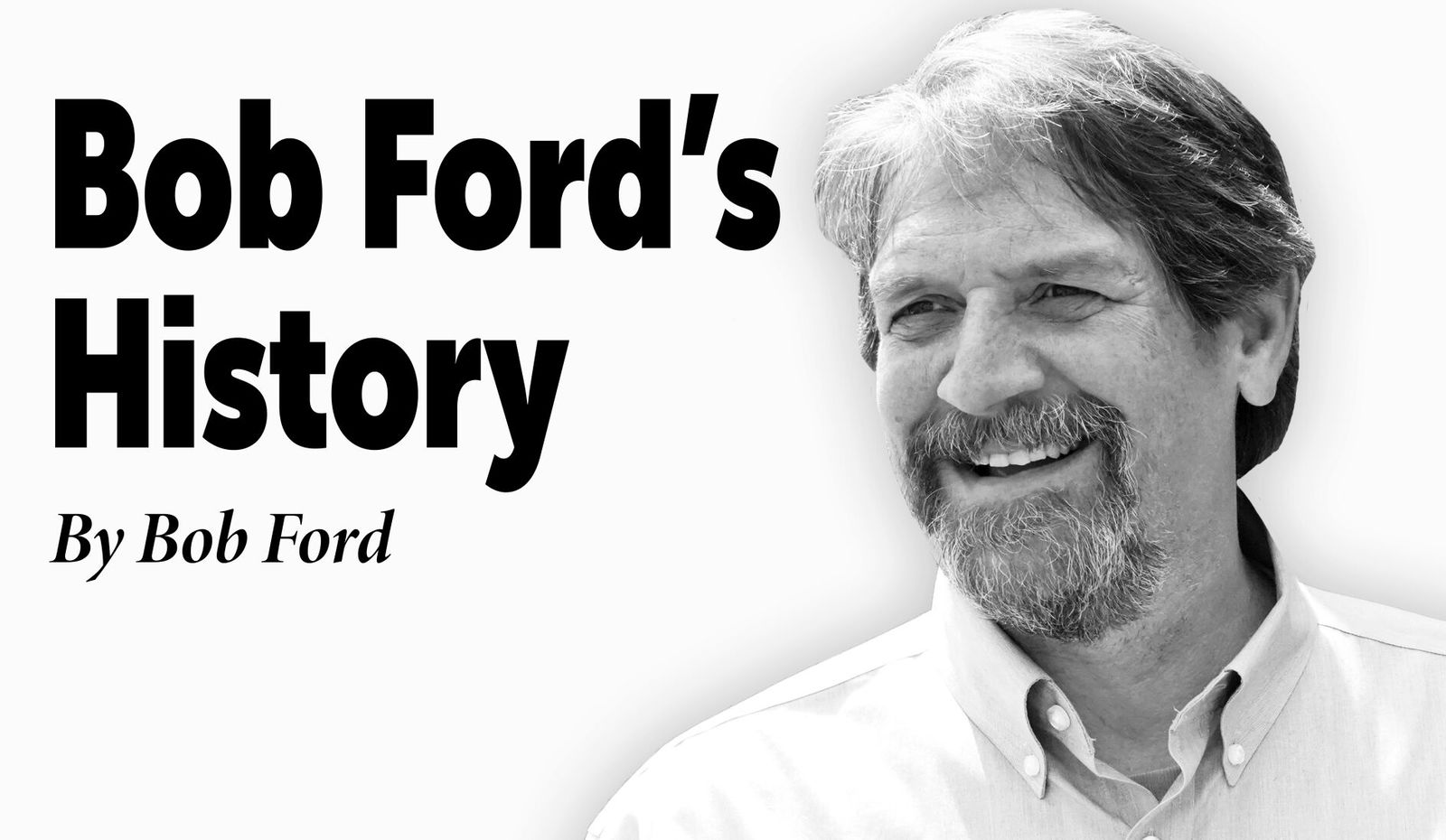You can’t get there from here, until Ike paved the way!

By Bob Ford Special to
Articles and podcasts are complimentary from those helping preserve our history: Nodaway Valley Bank, Eagle Communications, Hughes Chiropractic, The Hearing Connection and Anonymous Buffs. To comment or join in supporting this 503©(3) organization, contact Bob at robertmford@aol.com.
This is why I have a criminal record in Europe.
Gen. John J. Pershing had concerns in 1919 after our victory in World War I. He knew because the allies agreed to an armistice rather than an unconditional surrender, another war was on the horizon.
Worried about the Army’s ability to move men and equipment between military bases. An Army convoy was ordered to travel coast to coast just to see what sort of problems they would run into. The 81 vehicle caravan left Washington DC with several Corps represented: Air Service, Coastal and Field Artillery, Medical, Ordinance, Signal and Tank.
Col. Dwight D. Eisenhower joined the trip, “partly as a lark and partly to learn.”
The “train” consisted of 258 enlisted men driving 34 heavy cargo trucks, four delivery, two mobile machine shops, two spare parts trucks, water trucks, gasoline trucks, eight touring cars, nine motorcycles and a partridge in two ambulances.
It took 56 days to reach San Francisco and the Pacific. Road conditions west of Illinois were as you could imagine … full of ruts, holes, pits and weak wooden bridges. Engineers had to inspect, fortify and/or detour around many bridges in order to move the massive trucks.
The convoy had two public relation officers driving a day in front to give a heads up to towns and cities that the column was coming. Many places greeted the trucks with a convoy of their own leading them into the city with local dignitaries and firetrucks. The column turned into a recruiting tour venturing through hundreds of towns, cheered on by over 3 million citizens.
In Eisenhower’s final report, he not only described the absolute need for reliable roads and bridges, Ike described construction methods that were vital. With that report, the scenario for the Interstate Highway System was in gear.
The United States wasn’t the only country to realize the importance of dependable roads connecting military facilities, Germany started building their Autobahn in the 1920’s. Life in post World War I Germany was hard, they suffered through a devastating depression.
Hitler became Chancellor in 1933 and realized building out the Autobahn not only gave Germany the military roads he needed but supplied work for the masses that were unemployed.
I had a disastrous experience on the Autobahn that affected my life. When I hear the word Autobahn it’s like the three Stooges reacting to the words Niagara Falls … ”slowly I turn!”
In the late 70s, I sold my bicycle shop, Cycle Peddlers, and headed to Europe to tour the continent on a bike with my best bud Randy Bell. It was late August, we were in Lubeck, Germany trying to get to the coast and catch a ferry to Sweden, when we made a wrong turn.
Misreading a map, we rode down a ramp onto an Autobahn. Instantly realizing our mistake we tried to cross to the medium and go back up the opposite ramp to the road we just came off.
In tandem I was in back and said ‘cut’, Randy leading ‘cut cut’ meaning he moved over two lanes, only to get nailed by a tire-screeching Mercedes.
I saw my friend, in slow motion, getting catapulted into the air landing and skidding on his face. Dropping my bike, I raced quickly over to see bone around his eye socket exposed. I threw off my t-shirt onto his face and went for a towel. When I turned back around my white shirt was red, head wounds can really bleed.
Panicking, I started screaming to all the cars now stopped in both lanes on the highway, “ambulance, ambulance, hospital hospital,” as Randy went into shock. A tour bus driver four vehicles back waved me over and in English said he radioed for help.
The Polizei were the first to arrive. Shortly after the ambulance showed up — using something that looked like a human spatula — they got Randy into the ambulance and off to the hospital. It had been just 20 minutes since the accident, but as I went to get my bicycle out of the road, a detective now on the scene — in broken English — let me know I was under arrest. Seems it’s a crime to ride a bicycle onto the Autobahn but even worse to close down the highway.
They loaded the bikes into a van and took me to an old-looking police station where they placed me in a holding cell. I sat there for a while realizing things could not be worse in my life, was my buddy dead, forever affected? My mind was racing, thinking I might have to call his parents, then head home with Randy in a pine box. This building and cell is exactly what I envisioned a Gestapo Headquarters would look like … I prayed.
Soon my angst was relieved, the detectives led me into a room with a speaker phone and introduced me to an English speaking judge. He was pleasant enough but charged me with bicycling on the Autobahn and halting traffic, how do you plead? “Well, guilty I guess.”
I gave my word never to go on an Autobahn again and promised to leave the country as soon as possible. I now have a record and was fined the equivalent of $100.
The detectives in the van drove me to the hospital, there sitting out front was Randy! He looked like the Phantom of the Opera but there he was in all his bandaged glory!
We were driven to a hotel and laid low for a week. I worked on Randy’s bike until he felt up to ferrying back to our base in London.
Leaving Germany, we were changed men. Randy left an eyebrow and half his face on the Autobahn while I was now someone with a record and not really welcome to come back to Germany.
I, of course, blame Pershing, Eisenhower and Hitler for making me go through that and helping me become a man.



